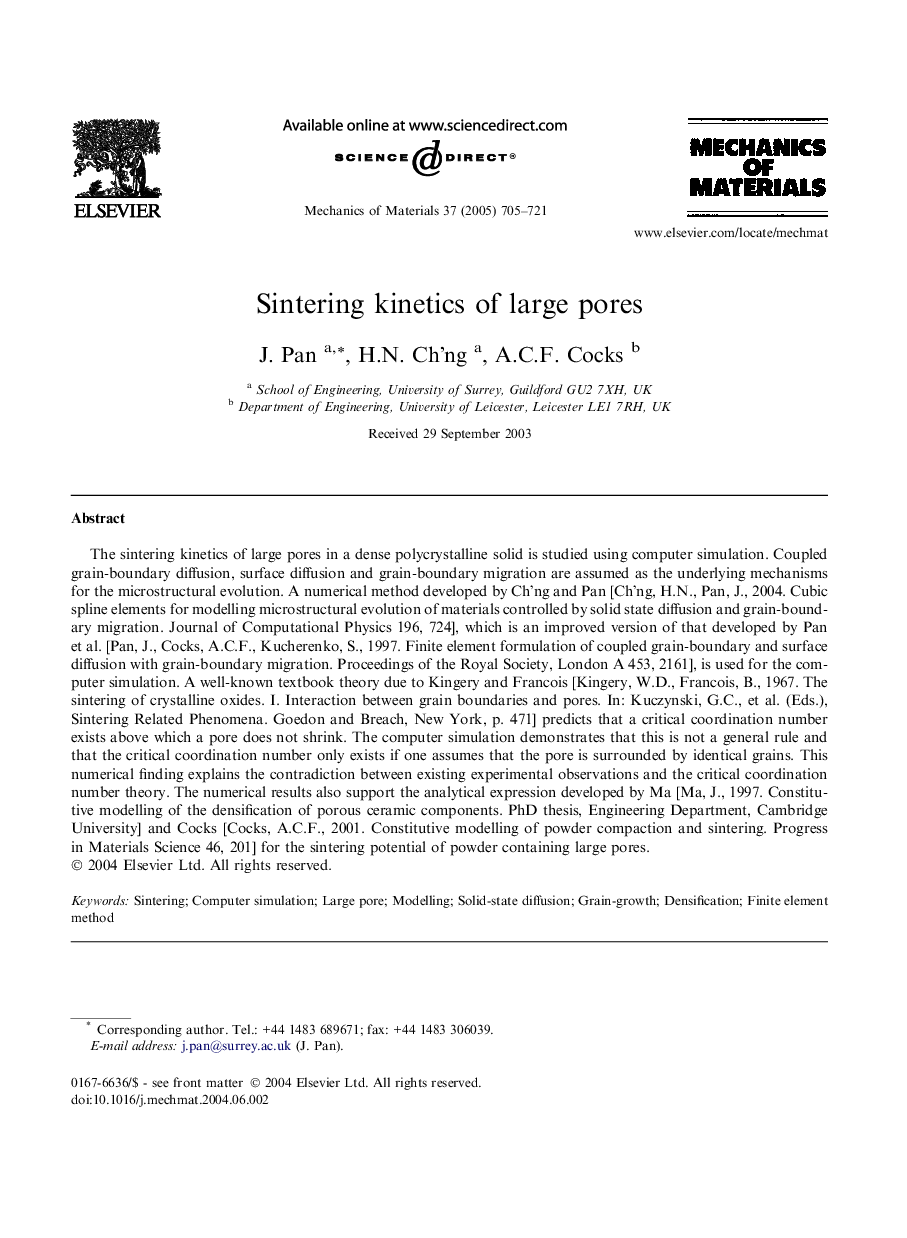| Article ID | Journal | Published Year | Pages | File Type |
|---|---|---|---|---|
| 9711642 | Mechanics of Materials | 2005 | 17 Pages |
Abstract
The sintering kinetics of large pores in a dense polycrystalline solid is studied using computer simulation. Coupled grain-boundary diffusion, surface diffusion and grain-boundary migration are assumed as the underlying mechanisms for the microstructural evolution. A numerical method developed by Ch'ng and Pan [Ch'ng, H.N., Pan, J., 2004. Cubic spline elements for modelling microstructural evolution of materials controlled by solid state diffusion and grain-boundary migration. Journal of Computational Physics 196, 724], which is an improved version of that developed by Pan et al. [Pan, J., Cocks, A.C.F., Kucherenko, S., 1997. Finite element formulation of coupled grain-boundary and surface diffusion with grain-boundary migration. Proceedings of the Royal Society, London A 453, 2161], is used for the computer simulation. A well-known textbook theory due to Kingery and Francois [Kingery, W.D., Francois, B., 1967. The sintering of crystalline oxides. I. Interaction between grain boundaries and pores. In: Kuczynski, G.C., et al. (Eds.), Sintering Related Phenomena. Goedon and Breach, New York, p. 471] predicts that a critical coordination number exists above which a pore does not shrink. The computer simulation demonstrates that this is not a general rule and that the critical coordination number only exists if one assumes that the pore is surrounded by identical grains. This numerical finding explains the contradiction between existing experimental observations and the critical coordination number theory. The numerical results also support the analytical expression developed by Ma [Ma, J., 1997. Constitutive modelling of the densification of porous ceramic components. PhD thesis, Engineering Department, Cambridge University] and Cocks [Cocks, A.C.F., 2001. Constitutive modelling of powder compaction and sintering. Progress in Materials Science 46, 201] for the sintering potential of powder containing large pores.
Keywords
Related Topics
Physical Sciences and Engineering
Engineering
Mechanical Engineering
Authors
J. Pan, H.N. Ch'ng, A.C.F. Cocks,
